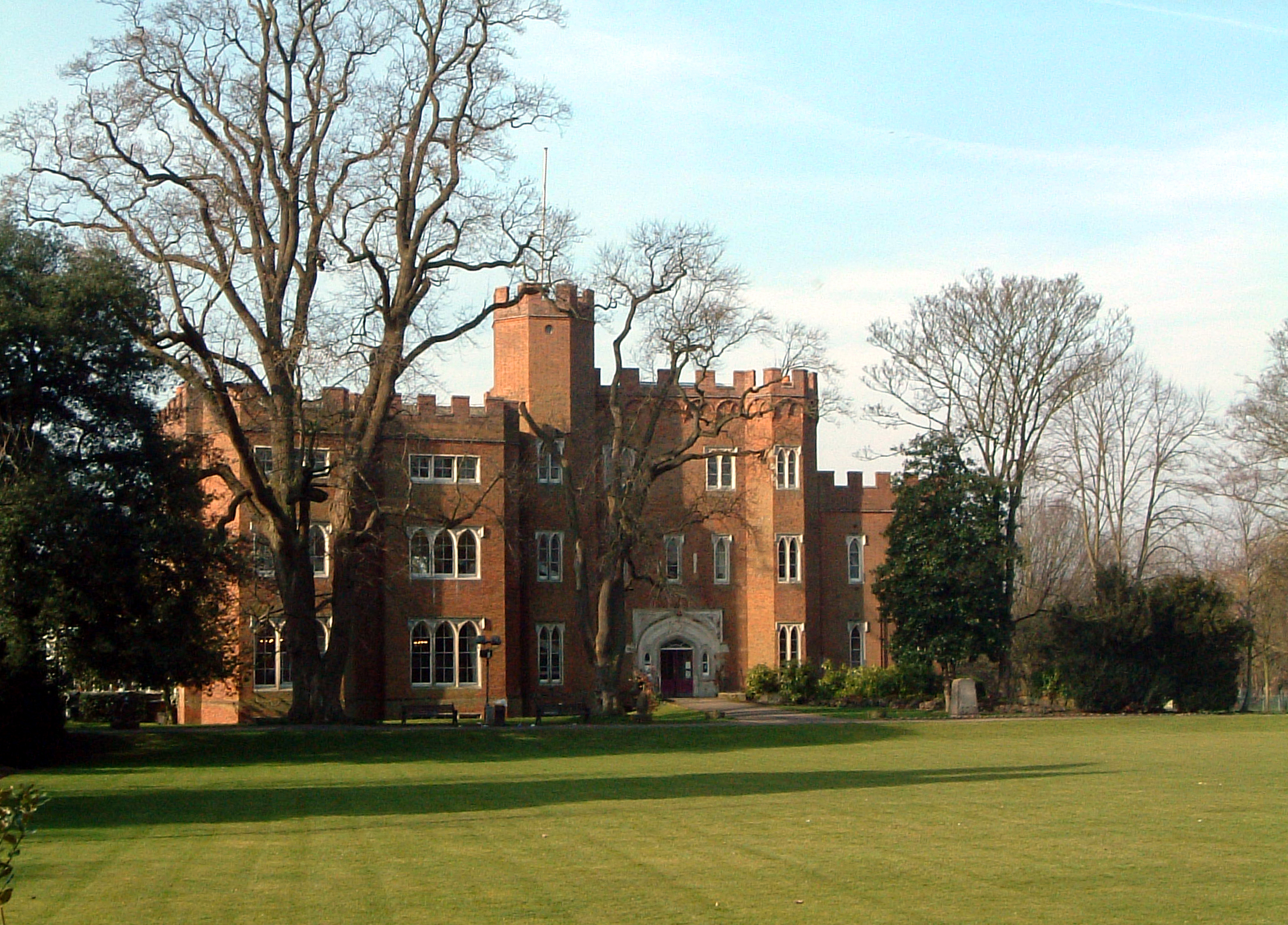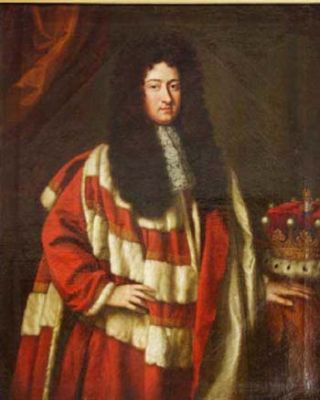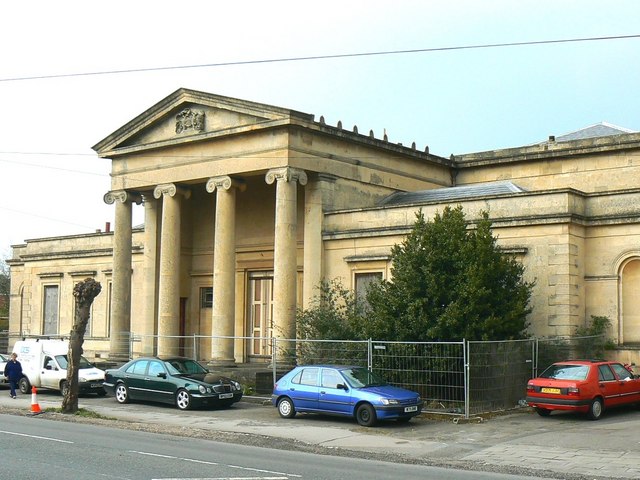|
Sir Henry Chauncy
Sir Henry Chauncy (12 April 1632 – April 1719) was an English lawyer, topographer and antiquarian. He is best known for his county history of Hertfordshire, published in 1700. Life He was born in Ardeley (then known as Yardley), Hertfordshire, son of Henry Chauncy and Anne Parke, daughter of Peter Parke of Tottenham. The manor of Ardeley had belonged to St Paul's Cathedral since before the Norman Conquest. Chauncy stated that the manor house (Ardeley Bury) and demesne had been held for above 200 years by his ancestors, who had had several leases for lives from the Dean and Chapter of St Paul's.Chauncy, ''The Historical Antiquities of Hertfordshire''. Charles Chauncy (1592–1672), President of Harvard College, was his great-uncle. He attended Stevenage Grammar School, then spent a year at Bishop's Stortford Grammar School before going to Gonville and Caius College, Cambridge followed by the Middle Temple. Although his main residence was at Ardeley Bury, which he inherited at ... [...More Info...] [...Related Items...] OR: [Wikipedia] [Google] [Baidu] |
Henry Chauncy 1826
Henry may refer to: People *Henry (given name) *Henry (surname) * Henry Lau, Canadian singer and musician who performs under the mononym Henry Royalty * Portuguese royalty ** King-Cardinal Henry, King of Portugal ** Henry, Count of Portugal, Henry of Burgundy, Count of Portugal (father of Portugal's first king) ** Prince Henry the Navigator, Infante of Portugal ** Infante Henrique, Duke of Coimbra (born 1949), the sixth in line to Portuguese throne * King of Germany **Henry the Fowler (876–936), first king of Germany * King of Scots (in name, at least) ** Henry Stuart, Lord Darnley (1545/6–1567), consort of Mary, queen of Scots ** Henry Benedict Stuart, the 'Cardinal Duke of York', brother of Bonnie Prince Charlie, who was hailed by Jacobites as Henry IX * Four kings of Castile: ** Henry I of Castile ** Henry II of Castile **Henry III of Castile **Henry IV of Castile * Five kings of France, spelt ''Henri'' in Modern French since the Renaissance to italianize the name a ... [...More Info...] [...Related Items...] OR: [Wikipedia] [Google] [Baidu] |
Hertford
Hertford ( ) is the county town of Hertfordshire, England, and is also a civil parish in the East Hertfordshire district of the county. The parish had a population of 26,783 at the 2011 census. The town grew around a ford on the River Lea, near its confluences with the rivers Mimram, Beane, and Rib. The Lea is navigable from the Thames up to Hertford. Fortified settlements were established on each side of the ford at Hertford in 913AD. The county of Hertfordshire was established at a similar time, being named after and administered from Hertford. Hertford Castle was built shortly after the Norman Conquest in 1066 and remained a royal residence until the early seventeenth century. Hertfordshire County Council and East Hertfordshire District Council both have their main offices in the town and are major local employers, as is McMullen's Brewery, which has been based in the town since 1827. The town is also popular with commuters, being only north of central London and connect ... [...More Info...] [...Related Items...] OR: [Wikipedia] [Google] [Baidu] |
High Sheriff Of Hertfordshire
The High Sheriff of Hertfordshire was an ancient Sheriff title originating in the time of the Angles, not long after the foundation of the Kingdom of England, which was in existence for around a thousand years. On 1 April 1974, under the provisions of the Local Government Act 1972, the title of Sheriff of Hertfordshire was retitled High Sheriff of Hertfordshire. The High Shrievalties are the oldest secular titles under the Crown in England and Wales, their purpose being to represent the monarch at a local level, historically in the shires. The office was a powerful position in earlier times, as sheriffs were responsible for the maintenance of law and order and various other roles. It was only in 1908 under Edward VII of the United Kingdom that the Lord Lieutenant became more senior than the High Sheriff. Since then the position of High Sheriff has become more ceremonial, with many of its previous responsibilities transferred to High Court judges, magistrates, coroners, local auth ... [...More Info...] [...Related Items...] OR: [Wikipedia] [Google] [Baidu] |
St Lawrence Church, Ardeley, Herts - Wall Monument - Geograph
ST, St, or St. may refer to: Arts and entertainment * Stanza, in poetry * Suicidal Tendencies, an American heavy metal/hardcore punk band * Star Trek, a science-fiction media franchise * Summa Theologica, a compendium of Catholic philosophy and theology by St. Thomas Aquinas * St or St., abbreviation of "State", especially in the name of a college or university Businesses and organizations Transportation * Germania (airline) (IATA airline designator ST) * Maharashtra State Road Transport Corporation, abbreviated as State Transport * Sound Transit, Central Puget Sound Regional Transit Authority, Washington state, US * Springfield Terminal Railway (Vermont) (railroad reporting mark ST) * Suffolk County Transit, or Suffolk Transit, the bus system serving Suffolk County, New York Other businesses and organizations * Statstjänstemannaförbundet, or Swedish Union of Civil Servants, a trade union * The Secret Team, an alleged covert alliance between the CIA and American indus ... [...More Info...] [...Related Items...] OR: [Wikipedia] [Google] [Baidu] |
Jan Drapentier
Jan Drapentier (fl. 1674–1713), was an engraver. Drapentier was the son of D. Drapentier or Drappentier, a native of Dordrecht, who engraved some medals commemorative of the great events connected with the reign of William III and Mary II, and also a print with the arms of the governors of Dordrecht, published by Mathias Balen in his ''Beschryving van Dordrecht'' (1677). Jan Drapentier seems to have come to England and worked as an engraver of portraits and frontispieces for the booksellers. These, which are of no very great merit, include portraits of William Hooper (1674), Sir James Dyer (1675), Richard Baxter, the Earl of Athlone, Viscount Dundee, Henry Sacheverell, the seven bishops, and others. He is probably identical with the Johannes Drapentier who by his wife, Dorothea Tucker, was father of a son Johannes, baptised at the Dutch Church, Austin Friars, on 7 October 1694. He was largely employed in engraving views of the country seats of the gentry, &c., in Hertfordshir ... [...More Info...] [...Related Items...] OR: [Wikipedia] [Google] [Baidu] |
John Egerton, 3rd Earl Of Bridgewater
John Egerton, 3rd Earl of Bridgewater KB PC (9 November 1646 – 19 March 1701) was a British nobleman from the Egerton family. He was the eldest son of John Egerton, 2nd Earl of Bridgewater and his wife Elizabeth Cavendish. His maternal grandparents were William Cavendish, 1st Duke of Newcastle and his first wife Elizabeth Basset. On 17 November 1664, he married Lady Elizabeth Cranfield, daughter of James Cranfield, 2nd Earl of Middlesex. She gave birth to a son, but died in childbirth. He married his second wife on 2 April 1673, Lady Jane Paulet, eldest daughter of Charles Paulet, 1st Duke of Bolton. Egerton served as a Member of Parliament for Buckinghamshire as a Whig for Buckinghamshire from 1685 to 1686. He also served as Lord Lieutenant of Buckinghamshire following his father's death in 1686 but was dismissed after his first period in office by King James II for refusing to produce a list of Roman Catholics to serve as officers of the militia. He was later reins ... [...More Info...] [...Related Items...] OR: [Wikipedia] [Google] [Baidu] |
Royal Pardon
In the English and British tradition, the royal prerogative of mercy is one of the historic royal prerogatives of the British monarch, by which they can grant pardons (informally known as a royal pardon) to convicted persons. The royal prerogative of mercy was originally used to permit the monarch to withdraw, or provide alternatives to death sentences; the alternative of penal transportation to "partes abroade" was used since at least 1617. It is now used to change any sentence or penalty. A royal pardon does not overturn a conviction. Officially, this is a power of the monarch. Formally, in Commonwealth realms, this has been delegated to the governor-general of the realm, which in practice means to government ministers who advise the monarch or viceroy, usually those responsible for justice. Specifically, it has been delegated to the Lord Chancellor in England and Wales, the Scottish Ministers in Scotland, and the federal and provincial cabinets in Canada, in respect of fed ... [...More Info...] [...Related Items...] OR: [Wikipedia] [Google] [Baidu] |
Assize Court
The courts of assize, or assizes (), were periodic courts held around England and Wales until 1972, when together with the quarter sessions they were abolished by the Courts Act 1971 and replaced by a single permanent Crown Court. The assizes exercised both civil and criminal jurisdiction, though most of their work was on the criminal side. The assizes heard the most serious cases, which were committed to it by the quarter sessions (local county courts held four times per year), while the more minor offences were dealt with summarily by justices of the peace in petty sessions (also known as magistrates' courts). The word ''assize'' refers to the sittings or sessions (Old French ''assises'') of the judges, known as "justices of assize", who were judges who travelled across the seven circuits of England and Wales on commissions of "oyer and terminer", setting up court and summoning juries at the various assize towns. Etymology Middle English < |
Witches' Mark
A witch's mark or devil's mark was a bodily mark that witch-hunters believed indicated that an individual was a witch, during the height of the witch trials. The beliefs about the mark differ depending on the trial location and the accusation made against the witch. Evidence of the witch's mark is found earliest in the 16th century, and reached its peak in 1645, then essentially disappeared by 1700. The Witch or Devil's mark was believed to be the permanent marking of the Devil on his initiates to seal their obedience and service to him. He created the mark by raking his claw across their flesh, or by making a blue or red brand using a hot iron. Sometimes, the mark was believed to have been left by the Devil licking the individual leaving a death skull pattern in the skin. The Devil was thought to mark the individual at the end of nocturnal initiation rites. [...More Info...] [...Related Items...] OR: [Wikipedia] [Google] [Baidu] |
Rector (ecclesiastical)
A rector is, in an ecclesiastical sense, a cleric who functions as an administrative leader in some Christian denominations. In contrast, a vicar is also a cleric but functions as an assistant and representative of an administrative leader. Ancient usage In ancient times bishops, as rulers of cities and provinces, especially in the Papal States, were called rectors, as were administrators of the patrimony of the Church (e.g. '). The Latin term ' was used by Pope Gregory I in ''Regula Pastoralis'' as equivalent to the Latin term ' (shepherd). Roman Catholic Church In the Roman Catholic Church, a rector is a person who holds the ''office'' of presiding over an ecclesiastical institution. The institution may be a particular building—such as a church (called his rectory church) or shrine—or it may be an organization, such as a parish, a mission or quasi-parish, a seminary or house of studies, a university, a hospital, or a community of clerics or religious. If a r ... [...More Info...] [...Related Items...] OR: [Wikipedia] [Google] [Baidu] |
Justice Of The Peace
A justice of the peace (JP) is a judicial officer of a lower or ''puisne'' court, elected or appointed by means of a commission ( letters patent) to keep the peace. In past centuries the term commissioner of the peace was often used with the same meaning. Depending on the jurisdiction, such justices dispense summary justice or merely deal with local administrative applications in common law jurisdictions. Justices of the peace are appointed or elected from the citizens of the jurisdiction in which they serve, and are (or were) usually not required to have any formal legal education in order to qualify for the office. Some jurisdictions have varying forms of training for JPs. History In 1195, Richard I ("the Lionheart") of England and his Minister Hubert Walter commissioned certain knights to preserve the peace in unruly areas. They were responsible to the King in ensuring that the law was upheld and preserving the " King's peace". Therefore, they were known as "keepers of th ... [...More Info...] [...Related Items...] OR: [Wikipedia] [Google] [Baidu] |
Walkern
Walkern is a village and civil parish in East Hertfordshire, England. It is about two miles from Stevenage. The village has several shops, including a convenience store, a hair and beauty salon, a craft shop, a shop that features homestyle products, a tea shop, a drum shop, a petrol station and Walkern Gallery near the White Lion public house. Other pubs include the Yew Tree. The village also has a primary school, doctors' surgery, recreation ground and a range of seasonal clubs; according to the time of year there is cricket, football and many other clubs based in the Walkern Sports and Community Centre towards the end of the village near the War Memorial and opposite a former watermill. History The River Beane, a chalk stream, crosses the village street of Church End at a ford. It was used to power watermills, a 19th-century example is still to be seen downstream at the other end of the village. The village appears as 'Walchra' in the Domesday Book of 1086. The name is belie ... [...More Info...] [...Related Items...] OR: [Wikipedia] [Google] [Baidu] |




.jpg)
